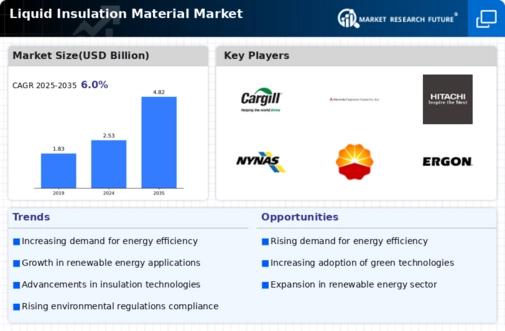Market Analysis
In-depth Analysis of Liquid Insulation Material Market Industry Landscape
The market dynamics of liquid insulation materials are shaped by various factors influencing the supply, demand, and overall trends within the construction and insulation industry. Liquid insulation materials serve as innovative solutions for thermal and acoustic insulation, providing versatility in application and ease of use. Understanding the market dynamics involves examining elements such as technological advancements, sustainability considerations, regulatory impacts, market drivers, and competitive forces.
Technological advancements are significant drivers in the market dynamics of liquid insulation materials. Ongoing innovations in formulation and application methods contribute to the development of liquid insulation materials that offer improved thermal resistance, durability, and ease of installation. Advanced features such as quick-curing formulations, spray-on applications, and compatibility with various surfaces enhance the overall performance and efficiency of liquid insulation materials. Manufacturers investing in cutting-edge technologies can gain a competitive edge by offering products that meet the evolving needs of the construction and insulation industry.
Sustainability considerations are increasingly influencing the market dynamics of liquid insulation materials. With a growing emphasis on energy efficiency and environmental responsibility, there is a rising demand for insulation solutions that reduce energy consumption and have a lower environmental impact. Liquid insulation materials that are formulated with eco-friendly and low-emission ingredients, along with recyclable packaging, align with the industry's push towards greener alternatives. Manufacturers focusing on sustainable formulations can capture market share and respond to the evolving preferences of environmentally conscious consumers.
Regulatory impacts, including building codes and energy efficiency standards, influence the market dynamics of liquid insulation materials. Compliance with regulations related to construction materials and energy performance is essential for manufacturers to ensure product acceptance and adherence to legal requirements. As building codes evolve to promote energy-efficient construction, liquid insulation materials must meet or exceed these standards to gain market acceptance. Staying informed about changing regulations is crucial for companies to navigate the complex landscape of insulation product compliance.
Market drivers, such as the growing construction industry, energy-saving initiatives, and retrofitting projects, significantly impact the demand for liquid insulation materials. The construction sector's increasing focus on sustainable building practices and the need for energy-efficient solutions contribute to the rising demand for innovative insulation materials. Additionally, retrofitting existing structures with liquid insulation materials becomes a viable option for improving energy efficiency and meeting modern insulation standards. Manufacturers must stay attuned to industry trends and market drivers to align their product offerings with the diverse needs of construction projects.
Challenges within the market dynamics include pricing pressures, customization demands, and awareness barriers. The liquid insulation material market is characterized by competition among manufacturers, leading to pricing considerations that may impact profit margins. Additionally, meeting customization demands for specific applications or project requirements adds complexity to production processes. Overcoming awareness barriers and educating consumers and contractors about the benefits and applications of liquid insulation materials becomes crucial for manufacturers to expand market reach.
The competitive landscape is a significant aspect influencing the market dynamics of liquid insulation materials. The industry is marked by a diverse range of manufacturers vying for market share, and differentiation is key. Companies strive to distinguish themselves through factors such as product performance, sustainability features, ease of application, and brand reputation. Understanding and adapting to changing construction industry needs and emerging technologies are essential for success in this competitive market.
Global considerations, including trade dynamics and regional building practices, also impact the market for liquid insulation materials. Manufacturers may need to navigate varying regulations, trade agreements, and construction standards across different regions. Adapting to market dynamics in different parts of the world is crucial for companies aiming to establish a strong and sustainable presence in the global liquid insulation material market.










Leave a Comment